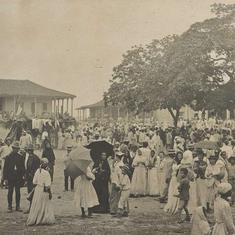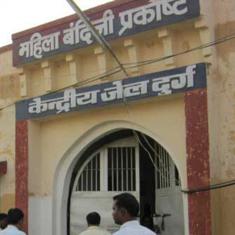Even as India’s political leadership struggles to handle the health and humanitarian crisis caused by the novel coronavirus and the economic crash that has followed, New Delhi has fresh challenges on its northern borders.
Over the last two weeks, Chinese troops have clashed with the Indian Army at several points along the Line of Actual Control, ratcheting up tensions between the nuclear-armed neighbours. And at the same time, India has found itself in a spat with Nepal over a portion of land that is both countries claim as their own.
What is going on?
Here’s what you need to know.
Line of Actual Clashes
India and China do not share a defined and demarcated border. Instead, there is the Line of Actual Control, which stretches thousands of kilometres from Ladakh all the way to Arunachal Pradesh. Because both sides dispute the actual demarcation of the border, India and China also have different “perceptions” of where the Line of Actual Control actually lies – leading to occasional incidents between troops from both sides.
Every once in a while, a video emerges of troops getting into fistfights or stone-pelting. No actual shots have been fired at the LAC in four decades.
But the frequency of incidents appears to have increased in the last few years, particularly in the eastern sector in Ladakh. In 2017, the two countries engaged in a 73-day standoff at Doklam, the tri-junction region where India, China and Bhutan meet.
Over the past three weeks, according to Indian media reports, Chinese transgressions of the LAC have occured at four places: Pangong Tso, Galwan Nalah and Demchok in Ladakh and at Naku La in Sikkim.
In these regions, Indian troops reportedly numbering in the dozens ran into Chinese forces numbering in the hundreds, who had also dug trenches, put up tents and increased patrolling in regions that India considers on its side of the LAC.
The Hindu and the Indian Express have more specific details about the terrain and the incidents.
These were not just incursions over disputed territory: There were actual scuffles, leaving dozens of troops injured and even reports alleging that some Indian soldiers were “detained” by the Chinese Army, though India has denied these.
On Friday, Indian Army Chief MM Navarane landed in Leh to take stock of the situation in eastern Ladakh. The Print reported that India is undertaking “proactive localised preventive deployment” – moving troops within the sector to the Line of Actual Control, which is the disputed border between the two countries. For now it seems likely that the tensions are going to remain high.
What is India saying officially?
Indian Army Chief Navarane at first claimed that the incidents were caused by “aggressive behaviour by both sides”, because of “differing perceptions of the alignment of boundaries”.
There were two incidents at Eastern Ladakh and North Sikkim where aggressive behaviour by both sides resulted in minor injuries to troops post which both sides disengaged after dialogue and interaction at local level: Army Chief General Manoj Mukund Naravane https://t.co/Y4srINkmIV
— ANI (@ANI) May 14, 2020
India’s Ministry of External Affairs, however, took a different line.
Responding to statements from the Chinese Foreign Ministry accusing India of “trespass”, the Indian spokesperson said, “Any suggestion that Indian troops had undertaken activity across the Line of Actual Control in the western sector or the Sikkim sector is not accurate. Indian troops are fully familiar with the alignment of the Line of Actual Control in the India-China border areas and abide by it scrupulously. All Indian activities are entirely on the Indian side of the LAC. In fact, it is the Chinese side that has recently undertaken activity hindering India’s normal patrolling patterns.”
In his annual press conference, however, Chinese Foreign Minister Wang Yi did not say anything about India.
Why are the two sides clashing?
A year after the Doklam stand-off, Indian Prime Minister Narendra Modi and Chinese President Xi Jinping held an informal summit in the Chinese city of Wuhan and hammered out an agreement that wass supposed to ensure “trust, mutual understanding and predictability” in the handling of border affairs. The meeting inspired the idea of a ‘Wuhan spirit’ between the two nations that would allow for both to move forward without necessarily being a threat to each other.
Today, however, the word Wuhan in India is more likely to be followed up by ‘virus’, as the country sees a surge of anti-Chinese sentiments combined with hopes that global value chains might consider shifting their manufacturing to India. New Delhi has cautiously attempted to work with countries like the United States that are hoping to use this moment to turn the rest of the global community against Beijing, though it cannot afford to say no to Chinese investments.
That is the broader context of ties between the two countries.
The specific reasons for these clashes, however, remain unclear. As mentioned earlier, incidents such as these are not entirely uncommon along the LAC. Yet the seemingly co-ordinated nature of Chinese intrusions at different points, some of which are thousands of kilometres apart, have raised concerns that Beijing has a more specific outcome in mind.
Some observers believe that this is China’s reaction to Indian efforts over the last few years to build border infrastructure that attempts to match Chinese roads and structures on the other side of the LAC, where the terrain is more forgiving.
“The current stand-off at the Galwan River Valley in Ladakh, for instance, is prompted by a road that branches off from the all-important 255 km Darbukh-Shyok-DBO (DSDBO) road, which is India’s mainstay on the Leh-Karakoram axis,” wrote Pranab Dhal Samanta in the Economic Times.
“The branch road moves across a bridge and leads up to the Galwan point, a dominant hill feature that India wants to service and maintain as it overlooks the area around the DSDBO road. While Indian troops have been patrolling up to the point, the effort now is to improve road access and regularise presence. This is unacceptable to China, which is keen to retain ability to deny India any sense of comfort on security of the DSDBO road. Hence, the stand-off,” he added.
Beijing has also used these sorts of irritants to deliberately engineer outcomes in the past, and the fact that a number of the incursions are in areas that were thought to be settled is being seen as one sign of what the Chinese may be attempting to do here.
There is also India’s decision to split Ladakh from Jammu and Kashmir last year, a move that unsettled Pakistan and is currently causing trouble with Nepal because of a map of Indian territory that includes what Kathmandu claims is its own territory. India hinted that Nepal’s complaints have come at the behest of China, angering Kathmandu even further.
Despite these potential explanations, it remains unclear what the actual aims of the current moves may be – which itself may end up making things worse.
“A lack of clarity about intentions leads to assumptions of worst-case scenarios and the tendency to take higher risks than usual,” wrote Lt Gen (Retd) DS Hooda. “If the standoff drags on, nationalistic fervour is bound to kick in, and the resultant public groundswell would restrict the options available to political leaders on both sides to resolve the issue.”










